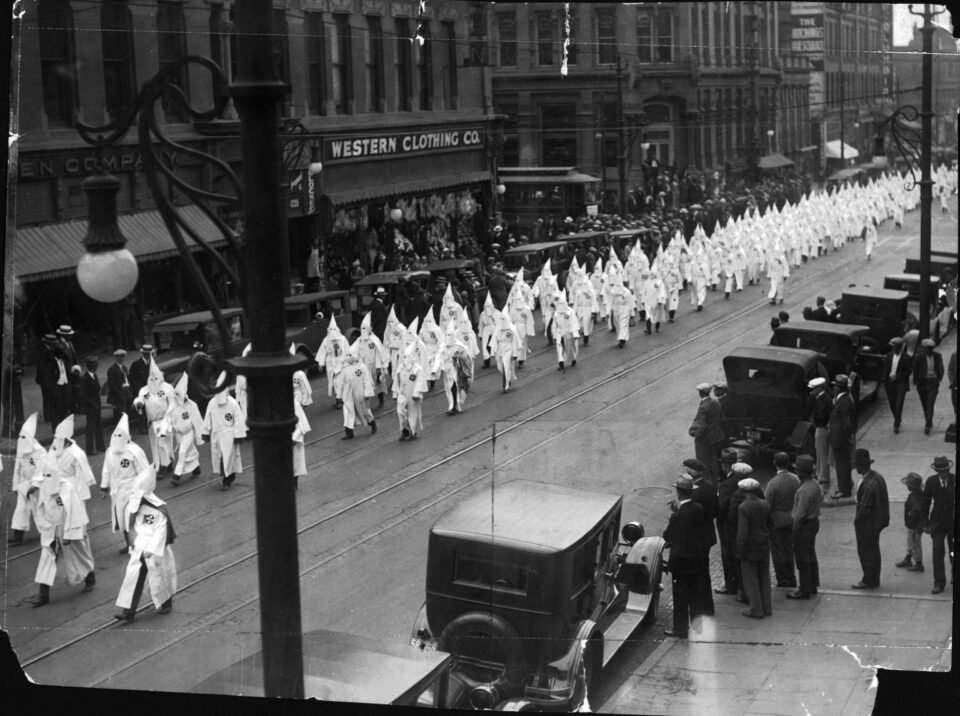Who Knew VIPs in 1920s Denver Were KKK?
Sharing an Honor With Washington, Mandela
Black Press Really Can Help Save White Papers
New Mayor Refused to Meet Editorial Board
‘Asian’ Not Good Shorthand for ‘Asian American’
Latin American Journalists Plead for Vaccine
Conservative Goldberg Leaves ‘Real Sports’
A Boost for Those Who’ve Left Mainstream Media
Hollywood Group Ousts Ex-Leader Over Remarks
Arizona Republic Outlines Diversity Progress
Short Takes
Support Journal-isms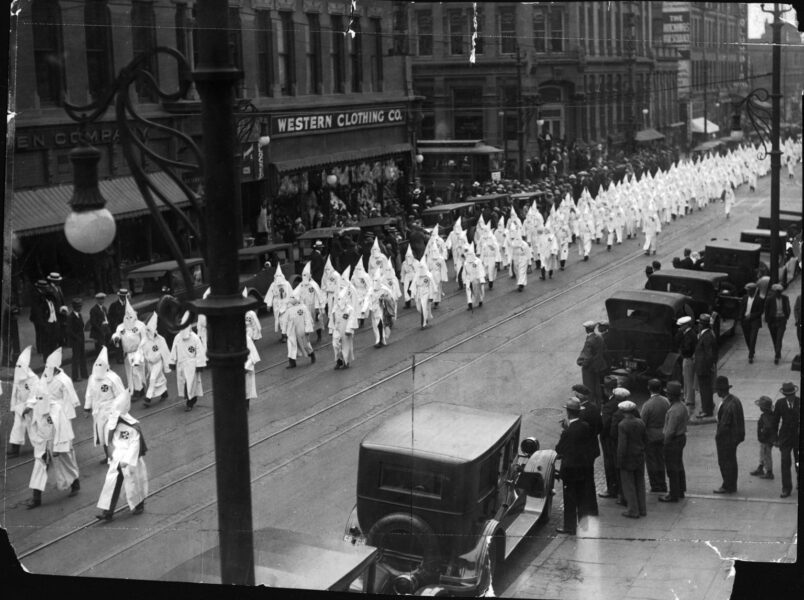
Who Knew VIPs in 1920s Denver Were KKK?
More than 60 years ago, a Rocky Mountain News reporter anonymously donated to the state of Colorado two weighty, leather-bound books showing that in 1920s Denver, close to 30,000 of the 107,000 white men living in the city were registered members of the Ku Klux Klan, Kevin Beaty reported last week for Denverite.
Only now are those names being released to a wider public.
The Denver Post was listed as one of those employing those Klan members, along with other federal, state and local institutions in the area.
The state’s historic collection decided to keep the ledgers secret for 50 years, Beaty wrote.
“The folks at the time thought they were too incendiary, too hot, so they decided to seal them until 1990,” Shaun Boyd, History Colorado curator of archives, told Beaty.
“In the ’90s, the museum quietly took the papers out of storage and made them available to researchers. Those who knew where to look could come view the names on microfilm. The books themselves were on display in a public exhibit, sitting behind glass that prevented anyone from taking a closer look. But last summer, in the heat of protests for racial justice, Boyd said she felt moved to publish the ledger online in its entirety.
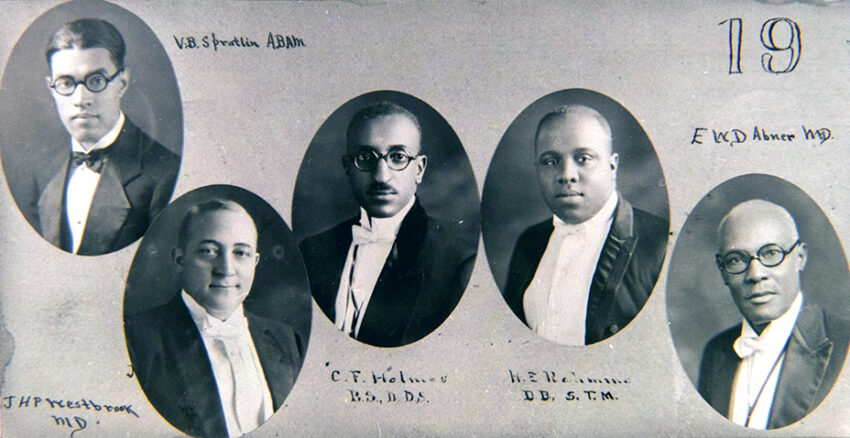
“Museum staff won a federal grant to scan the documents and run them through software that would turn old type-written text into a searchable PDF. This week, they announced the project was complete: The papers are now available for anyone to examine.”
Beaty also wrote, “Among the listed names are two governors, the superintendent of Denver’s mountain park system, Denver’s chief building inspector and Denver’s county clerk. Members’ employers included Denver’s police department and Masonic lodge, district and county courts, the U.S. Mint, the Federal Reserve, Fitzsimons hospital, the Denver Post and the state history museum (History Colorado’s precursor).
“The major takeaway from these documents, History Colorado curator of archives Shaun Boyd told us: White supremacy is inextricably linked with Denver’s history.”
 Journal-isms asked Gregory L. Moore (pictured), former Denver Post editor, for his reaction to the disclosure.
Journal-isms asked Gregory L. Moore (pictured), former Denver Post editor, for his reaction to the disclosure.
“This is a very big story,” Moore messaged Sunday. “I just finished watching the CNN documentary the People v. The Klan and the thing you just can’t fathom is how deeply embedded in the power structure the Klan was — maybe still is.
“But the point is this is a very important snapshot into Denver society in the mid-1920s. I am hoping the media aggressively pores over those records and finds out who those people were and where they stood in Denver society so we can better understand those times and these.
“It’s interesting that a Rocky reporter surrendered the documents. Why and how he or she came into possession of them is also a story. We can’t consign this revelation to history. The names have already been withheld for a half century. For the media it’s important we do what we are uniquely trained to do: tell stories, make connections and help us understand how to view this discovery. Clearly it’s a fascinating story, and it’s an important one, one that threatens to rewrite the history of Denver.”
Beaty’s Denverite story added, “Denver has changed a lot in 100 years, but Boyd said she and her colleagues still needed to take great care in releasing the papers today.
“After they decided to publish [the] ledger, History Colorado gathered community advisors to help them proceed appropriately. . . . Representatives from Black, Jewish, LGBTQ and Catholic communities weighed in, as well as historians versed in the history of hate and discrimination in this state.
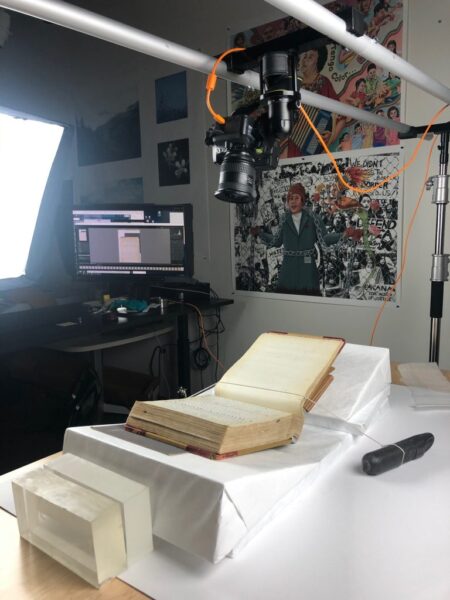
“There were two reasons for this. First, they wanted to avoid the possibility that publicizing these documents could unintentionally glorify the KKK’s presence in Colorado or re-traumatize communities terrorized by the group. Second, the advisor process fits in with a string of efforts in recent years to improve how the museum speaks to and includes marginalized communities.
“This came into play recently as History Colorado launched a new exhibit about the Sand Creek Massacre [of Native Americans] and when museum staff spoke to us last year about hiring their first curators focused on Chicano and LGBTQ history.
“ ‘I think we have a responsibility to tell the whole story of Colorado history and to talk to communities that, maybe, we haven’t talked to as well in the past,’ Boyd told us.
“For the most part, these community advisors were glad to see the KKK ledger come to light. . . .”
Sharing an Honor With Washington, Mandela
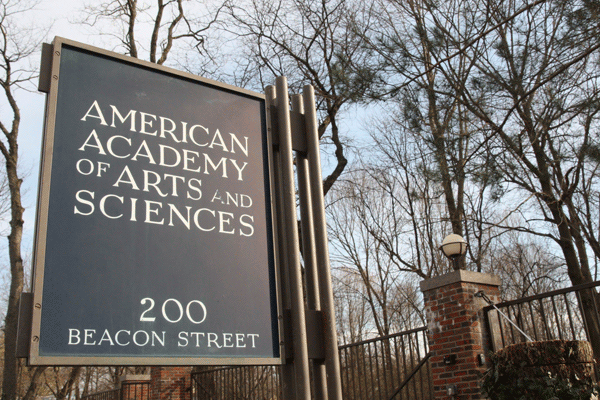 The American Academy of Arts and Sciences (pictured), founded by John Adams and John Hancock in 1780 at the beginning of the Republic, named 252 new members Wednesday, including the election of journalists of color deemed to be “exceptionally accomplished” and “advancing the public good.” They join such exalted figures as George Washington, Alexander Hamilton, Nelson Mandela and Marian Anderson.
The American Academy of Arts and Sciences (pictured), founded by John Adams and John Hancock in 1780 at the beginning of the Republic, named 252 new members Wednesday, including the election of journalists of color deemed to be “exceptionally accomplished” and “advancing the public good.” They join such exalted figures as George Washington, Alexander Hamilton, Nelson Mandela and Marian Anderson.
Named in the journalism, media and communications category were:
- “Nikole Hannah-Jones, The New York Times [On Monday, the University of North Carolina’s Hussman School of Journalism and Media announced that Hannah-Jones would become its Knight Chair in Race and Investigative Journalism. “I’ll still be at @nytimes,” she tweeted.]
- “Maria L. Hinojosa, Futuro Media Group
- “Perri Klass, New York University
- “Michele L. Norris, The Washington Post; The Race Card Project
- “Jorge G. Ramos Ávalos, Univision Communications, Inc.
- “Kara Swisher, Vox Media, Inc.
- “Ginger L. Thompson, ProPublica
- “Lawrence Wright, The New Yorker”
Others include civil rights activist and math literacy pioneer Robert Moses, The Algebra Project; media entrepreneur and philanthropist Oprah Winfrey, Harpo, Inc.; Oprah Winfrey Network; and neurosurgeon and medical correspondent Sanjay Gupta, CNN; Emory University.
“While the founders did not anticipate a year with a historic pandemic, overdue racial reckoning, and political strife, the purpose of electing new members is more compelling than ever,” the academy said in its statement.
“The 2021 election provides an opportunity to recognize extraordinary people who help solve the world’s most urgent challenges, create meaning through art, and contribute to the common good from every field, discipline, and profession. . . .”
The Academy has elected more than 13,500 members since its founding in 1780.

Black Press Really Can Help Save White Papers
“Can the Black Press Help Save White Newspapers?” asked a headline in this column last September, reporting on a collaboration between the Dallas Morning News and the Texas Metro News, a part of the Black press, as a possible model for mainstream newspapers who wish to increase their coverage of communities of color.
Now the News Media Alliance, the association of newspaper publishers, has issued such a new collaboration guide for its more than 2,000 news organization members.
“In this guide, we will walk you through key questions to ask when considering a partnership, as well as ideas and tips for success and best practices for cross-newsroom collaboration.
“We will also profile a successful partnership between the newsrooms at The Dallas Morning News and Texas Metro News, outlining how they did it, from the formal arrangement to working together on stories, events and more. . . .”

New Mayor Refused to Meet Editorial Board
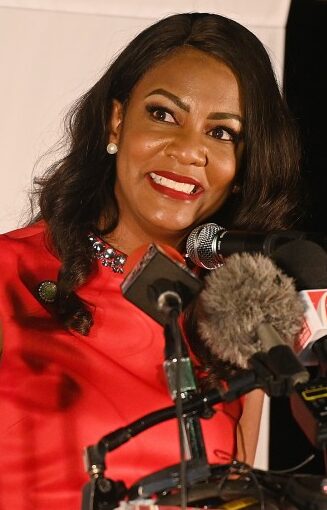 Tishaura Jones (pictured) was sworn in Tuesday as the first African American woman to become mayor of St. Louis, and she won the election in part by campaigning against the St. Louis Post-Dispatch editorial board.
Tishaura Jones (pictured) was sworn in Tuesday as the first African American woman to become mayor of St. Louis, and she won the election in part by campaigning against the St. Louis Post-Dispatch editorial board.
“Since 2016, this editorial board has done nothing but use its pen, ink, and declining readership to try to disparage my reputation as a public servant of the city I love and serve,” Jones, the city treasurer, wrote in July in declining an invitation to meet with the board.
When Jones ran in 2017 and lost narrowly, she said the Post-Dispatch was part of “the systemic racism that pervades almost every public and private institution”
She noted that the then-five member editorial board had no African Americans, though the city was 49.2 percent Black or African American in the 2010 census.
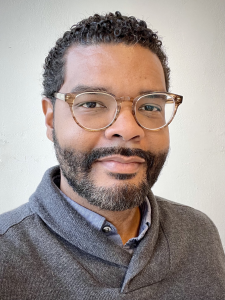 The newspaper endorsed Alderman Antonio French (pictured), who received only 15.31 percent of the vote, but now sits on the now three-member editorial board.
The newspaper endorsed Alderman Antonio French (pictured), who received only 15.31 percent of the vote, but now sits on the now three-member editorial board.
However, city spokesman Nick Dunne told Journal-isms by telephone, there remains a “level of misogyny” there. Still, the new mayor is “open to having a conversation with them,” Dunne said.
The Post-Dispatch editorialized Tuesday that Jones deserved a honeymoon. “Jones is the mayor, and skeptics must give her a chance to demonstrate that her ideas and leadership style can yield positive results. As she acknowledged, problems that took decades to create won’t be solved in a few days or months,” the editorial said.
- Jonathan Fisher, Post-Dispatch: Letter: Editorial Board unfair in treatment of Tishaura Jones (Feb. 27)
- Tony Messenger, Post-Dispatch: Tishaura Jones’ historic victory sparks hope of a thriving St. Louis for her son’s generation (April 7)
‘Asian’ Not Good Shorthand for ‘Asian American’
“Asian, Pacific Islander, AAPI, Stop AAPI Hate and anti-Asian sentiment have all been added to the Stylebook,” the Associated Press announced Friday.
“AP’s previous entry on Asian American now adds that Pacific Islanders should not be described as Asian Americans, Asians or of Asian descent; and that Asian should not be used as shorthand for Asian American when possible.”
Michelle Ye Hee Lee, president of the Asian American Journalists Association, told Kristen Hare of the Poynter Institute, “We hope that these efforts to improve media coverage of AAPI communities help bring more visibility to the experiences of our communities and our journalists.”
- Rachel Belle, mynorthwest.com: KIRO 7 TV anchor says she had to change her Cambodian name to get hired (March 25)
- Becky Z. Dernbach, Sahan Journal, Minneapolis: Asian American history is rarely taught in schools. Educators say that fuels anti-Asian violence
- Sofia Koyama, Asian American Journalists Association: AAJA commends AP Stylebook’s updates pertaining to AAPI community coverage
Latin American Journalists Plead for Vaccine
“In other latitudes, countries such as Zimbabwe and Indonesia included journalists among the priority groups to receive the COVID-19 vaccine,” Paola Nalvarte reported Tuesday for LatAm Journalism Review. “Which countries in Latin America recognize journalists as essential workers and include them in vaccination plans as at-risk groups? Just El Salvador, so far.
 ” ‘We will vaccinate all journalists starting this Tuesday [April 20],’ said Salvadoran President Nayib Bukele via Twitter. The leader said in a later tweet that he includes journalists as second-line workers, for covering hospitals, vaccination centers, etc.
” ‘We will vaccinate all journalists starting this Tuesday [April 20],’ said Salvadoran President Nayib Bukele via Twitter. The leader said in a later tweet that he includes journalists as second-line workers, for covering hospitals, vaccination centers, etc.
“A Salvadoran parliamentarian stressed that journalists ‘inconvenient’ to the government will also receive the vaccine.
“Journalistic associations in Brazil, Peru, the Dominican Republic, Argentina, Chile, Venezuela, Bolivia, Honduras, Paraguay, among other countries in the region, have been asking their governments to recognize journalism as a necessary profession for information during the pandemic, and the danger media workers face every day when taking to the streets to report on COVID-19.
“Latin America is the most deadly region for journalists in terms of deaths caused by COVID-19. . . .”
Conservative Goldberg Leaves ‘Real Sports’
 “In a move that many may have predicted but has largely gone unreported, unnoticed, and somewhat unexplained, 14-time Emmy award winner Bernard Goldberg (pictured, with Donald Trump) has left HBO’s Real Sports,” Ben Koo reported Monday for Awful Announcing.
“In a move that many may have predicted but has largely gone unreported, unnoticed, and somewhat unexplained, 14-time Emmy award winner Bernard Goldberg (pictured, with Donald Trump) has left HBO’s Real Sports,” Ben Koo reported Monday for Awful Announcing.
Koo cited a “growing rift of the show’s progressive editorial direction and Goldberg’s dissenting conservative politics.”
Goldberg weighed in on athletes taking political positions and on transgender issues. “A few days ago, I tuned into a hockey playoff game and, before the game started, there was a ceremony that featured a player who said: ‘Racism is everywhere,’ ” he wrote for The Hill.
“I don’t believe racism is everywhere. I don’t believe it’s systemic. I don’t believe it’s in the DNA of our country. And I didn’t tune into the game to get a lecture about how racist America is. So I changed the channel.”
Koo wrote, “Not long after Goldberg’s The Hill column (which went largely unnoticed), Real Sports was set to air a segment on transgender athletes manned by Goldberg. However, the segment never aired after being abruptly pulled, with all mentions and teasers of the segment scrubbed from the internet.”
A Boost for Those Who’ve Left Mainstream Media
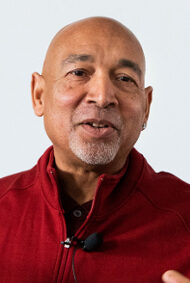 In a shot in the arm for journalists who have left their perches in mainstream media, the Scripps Howard Foundation Wednesday named Derrick Z. Jackson (pictured), former Boston Globe op-ed columnist, as winner of its Scripps Howard Award for opinion writing.
In a shot in the arm for journalists who have left their perches in mainstream media, the Scripps Howard Foundation Wednesday named Derrick Z. Jackson (pictured), former Boston Globe op-ed columnist, as winner of its Scripps Howard Award for opinion writing.
Jackson won for a collection of columns called “Tried to Warn You.” “In his blog commentary for the Union of Concerned Scientists and Grist.org, Jackson drew stark attention to the dilatory effects caused by the politicization of COVID-19, calling out national leaders for ignoring the virus’ impact on essential workers who are often, in large numbers, people of color, “the foundation said.
“Judges’ comments: ‘Derrick Jackson writes with the aplomb of one heavily armed intellectually and the vigor of a man determined to use his voice to right wrongs. His research and sourcing provide credibility, and his eloquent writing makes his work moving and memorable. “
Among other winners, “The New York Times Visual Investigations Team was selected as this year’s Impact Award winner for the broad impact its work had on the national consciousness and conversation about systemic racism. The team’s investigative work led to police reforms, influenced court cases and enhanced public understanding of the incidents that prompted outrage and demonstrations across the United States.”
The Star Tribune in Minneapolis won for “Excellence in Coverage of Breaking News” for “The Killing of George Floyd,” “a local news story that quickly became the global epicenter for America’s long struggle with racial inequality and injustice.”
Hollywood Group Ousts Ex-Leader Over Remarks
“A former president of the organization that hosts the Golden Globes has been dropped from the group’s board after sending an email that called Black Lives Matter a ‘hate movement,‘ ” the Associated Press reported Wednesday.
 “The Hollywood Foreign Press Association board said in an email Tuesday that Phil Berk is no longer a member of the organization. The decision comes hours after NBC — which telecasts the Globes — condemned Berk’s actions and called for his ‘immediate expulsion.’
“The Hollywood Foreign Press Association board said in an email Tuesday that Phil Berk is no longer a member of the organization. The decision comes hours after NBC — which telecasts the Globes — condemned Berk’s actions and called for his ‘immediate expulsion.’
“The show’s producer, dick clark productions, also demanded for Berk’s removal.
Berk, an eight-term association president, fell under heavy scrutiny after he sent an email Sunday criticizing Black Lives Matter co-founder Patrisse Cullors.
The email “touched off a firestorm among many of the organization’s members,” Stacy Perman reported April 18 for the Los Angeles Times.
“The email lands at a sensitive time for the HFPA, which has come under pressure for not having any Black members as well as allegations of ethical and financial lapses raised in a Times investigation into the group,” Perman continued.
At a March 18 meeting, representatives of the National Association of Black Journalists “encouraged the organization to identify Black journalists and Black publications in places like the Caribbean and Africa and U.S. locations like Atlanta, Chicago, Miami, Washington, D.C., and New York to recruit more diverse members with relevant experience,” NABJ said.
Arizona Republic Outlines Diversity Progress
 “More than three-quarters of new hires over the past year have been journalists of color, and eight of 13 are women – chasing the footsteps of Republic newsroom pioneers like Maggie Savoy, Venita Hawthorne James, Pam Johnson, Jennifer Dokes and Nicole Carroll,” Greg Burton (pictured), executive editor of The Arizona Republic, told readers on April 19.
“More than three-quarters of new hires over the past year have been journalists of color, and eight of 13 are women – chasing the footsteps of Republic newsroom pioneers like Maggie Savoy, Venita Hawthorne James, Pam Johnson, Jennifer Dokes and Nicole Carroll,” Greg Burton (pictured), executive editor of The Arizona Republic, told readers on April 19.
“Our goal is to match a community that is 44% people of color. We’re not there yet, but we’re making progress, and doing so while hiring the most skilled and promising journalists on the job market.
Burton also wrote, “We organized two community-advisory groups and a series of discussions with Black and Latino audiences with a mission to build knowledge, trust and empathy. This year, with the help of The Republic’s Diversity Committee, our goal is to add community-advisory groups for Asian, Native American and LGBTQ+ audiences. . . .
“To meet the minds of an evolving Arizona, The Republic added two full-time opinion and culture columnists and expanded our Editorial Board so that we now have members from the Black, Asian and Latino communities and a balance of members overall that truly reflects our community of readers – and potential readers. Along with myself, the board includes Abe Kwok, Joanna Allhands, Elvia Díaz, Greg Moore and Robert Robb, with Phil Boas leading the way. . . .”
The Republic is a Gannett property. Last August, Gannett announced that the company said its personnel would mirror the nation’s population of women and BIPOC [Black, Indigenous and People of Color] by 2025. Gannett also plans to increase by 30% the share of BIPOC in leadership positions, as Nathan Bomey reported then for USA Today.
- Becky Jacobs, Salt Lake Tribune: Utahns will soon see first stories from new project focused on diverse journalism
Short Takes
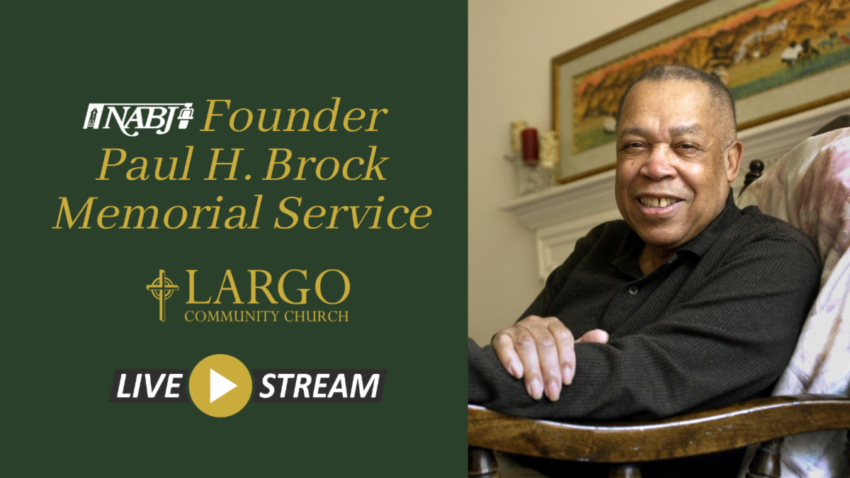
- “UN human rights experts* expressed serious concerns about the treatment and welfare of Mumia Abu-Jamal, an African-American man who has been in jail for 40 years in Pennsylvania, and is reportedly shackled to his hospital bed,” the United Nations Office of the High Commissioner for Human Rights said Tuesday. “Mr. Abu-Jamal had already been shackled to his bed during a four-day hospitalization in late February while being treated for heart failure. Abu-Jamal has been denied visits from his family and access to his lawyers and spiritual advisor after being admitted to an undisclosed hospital around 10 April, where he will reportedly undergo surgery.” [He did.] Abu-Jamal was a former radio journalist driving a taxi when he was arrested and convicted of killing a Philadelphia police officer in 1981.
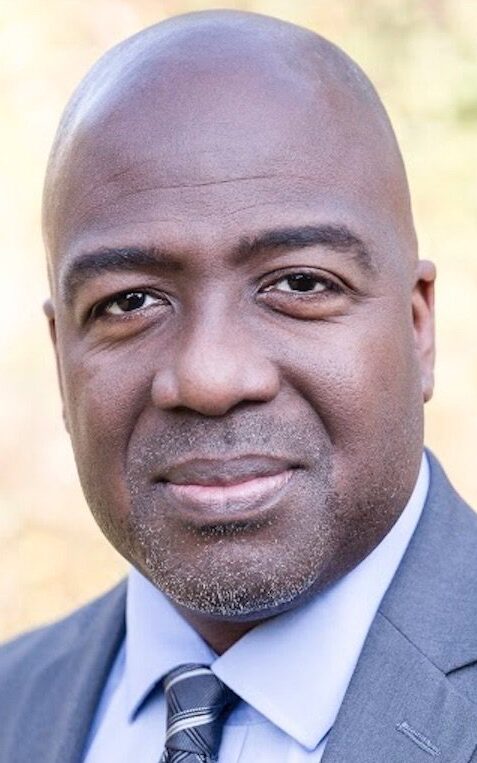 “Kevin Cross (pictured) senior VP and general manager for NBC Sports Chicago, will become president and general manager of WMAQ-WSNS Chicago, NBCUniversal’s NBC-Telemundo duopoly,“ Michael Malone reported Tuesday for nexttv.com. He starts June 1 and succeeds David Doebler, who is retiring. Cross will continue to oversee NBC Sports Chicago’s day-to-day operations. . . .” Release
“Kevin Cross (pictured) senior VP and general manager for NBC Sports Chicago, will become president and general manager of WMAQ-WSNS Chicago, NBCUniversal’s NBC-Telemundo duopoly,“ Michael Malone reported Tuesday for nexttv.com. He starts June 1 and succeeds David Doebler, who is retiring. Cross will continue to oversee NBC Sports Chicago’s day-to-day operations. . . .” Release
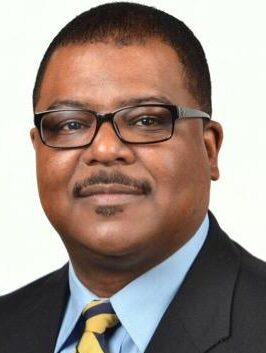 Leroy Chapman (pictured), deputy managing editor of The Atlanta Journal-Constitution since 2015, has been promoted to managing editor, Editor Kevin Riley announced Tuesday. Monica R. Richardson, who was senior managing editor of the AJC, joined the Miami Herald Jan. 1 as its top editor. Chapman will be “overseeing reporting teams that cover state and local politics, public safety and courts, K-12 schools and colleges and other local and hyperlocal news, . . .” Riley said in his note to the staff. “He has provided mature guidance and the steady hand required as we’ve navigated the pandemic and the demands of an unrelenting news cycle. And he stepped up to handle other key duties when Monica Richardson left us. . . .” In 2017, Chapman wrote about his father, Leroy Chapman Sr., for the Greenville (S.C.) News.
Leroy Chapman (pictured), deputy managing editor of The Atlanta Journal-Constitution since 2015, has been promoted to managing editor, Editor Kevin Riley announced Tuesday. Monica R. Richardson, who was senior managing editor of the AJC, joined the Miami Herald Jan. 1 as its top editor. Chapman will be “overseeing reporting teams that cover state and local politics, public safety and courts, K-12 schools and colleges and other local and hyperlocal news, . . .” Riley said in his note to the staff. “He has provided mature guidance and the steady hand required as we’ve navigated the pandemic and the demands of an unrelenting news cycle. And he stepped up to handle other key duties when Monica Richardson left us. . . .” In 2017, Chapman wrote about his father, Leroy Chapman Sr., for the Greenville (S.C.) News.
ABC Stations Lay Big Bet On Race, Culture Reporting from TVNewsCheck on Vimeo.
- “TVNewsCheck Editor Michael Depp talks with Mariel Myers, Nzinga Blake and Porsha Grant, executive producers of ABC Owned Television Stations’ new race and culture reporting team, about the project’s bold goals to bring depth and context to reporting on underrepresented communities across the group’s eight stations.”
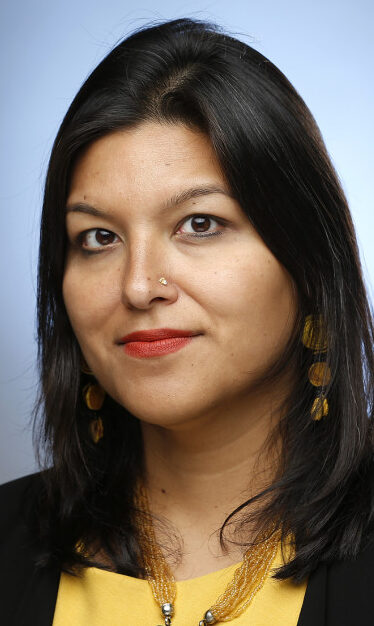 Former CNN executive S. Mitra Kalita (pictured), an outspoken diversity media advocate, surprised some last year when she left her job as senior vice president at CNN Digital to start Epicenter-NYC, a media company based in Queens, N.Y., founded during the pandemic to help neighbors navigate COVID-19. The organization has booked more than 4,600 COVID vaccine appointments for people in New York and beyond, Mia Sato of MIT Technology Review reported Wednesday. Sato conducted a q-and-a with Kalita.
Former CNN executive S. Mitra Kalita (pictured), an outspoken diversity media advocate, surprised some last year when she left her job as senior vice president at CNN Digital to start Epicenter-NYC, a media company based in Queens, N.Y., founded during the pandemic to help neighbors navigate COVID-19. The organization has booked more than 4,600 COVID vaccine appointments for people in New York and beyond, Mia Sato of MIT Technology Review reported Wednesday. Sato conducted a q-and-a with Kalita.
- “A group of local documentary filmmakers sent a letter to GBH this week holding ‘Beat the Press’ longtime host Emily Rooney accountable for comments she made on her show suggesting that work by filmmakers of color does not stand up to that of documentarian Ken Burns,” Cristela Guerra reported Friday for WBUR in Boston, referring to Boston public radio station WGBH. “The letter from the Documentary Producers Alliance-Northeast demanded she apologize for relying on ‘derision, racist tropes and more ignorance than fact’ in discussing the lack of diverse filmmakers on PBS. . . . In her video apology, Rooney said she understood her remarks were ‘uninformed, dismissive, and disrespectful. While my intention was to offer further balance to the discussion, my comments did not accomplish that and instead I crossed a line.’ “
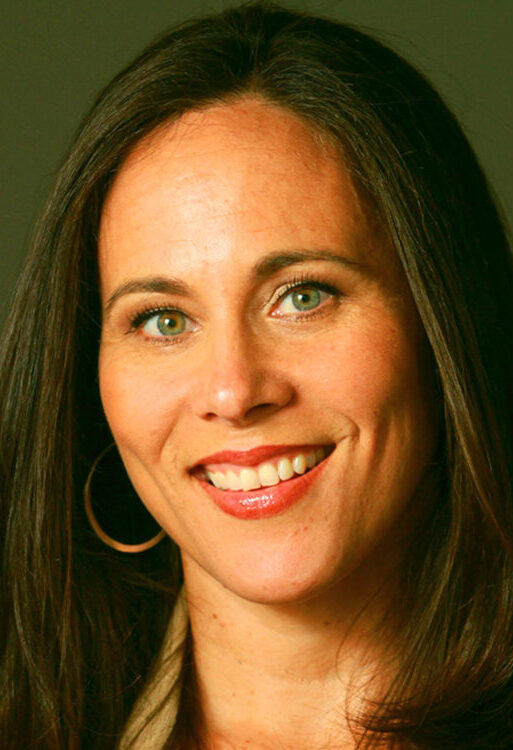 Veteran journalist and media executive Anne Vasquez (pictured) will be EdSource’s next executive director, the multi-media education platform for California said Wednesday. Vasquez is EdSource’s director of content and strategic initiatives and most recently was senior vice president of strategic initiatives and chief digital officer at Tribune Publishing. Before that, Vasquez was managing editor of the Sun Sentinel in Fort Lauderdale, Fla., and served on the boards of the American Society of News Editors, now known as the News Leaders Association, and the National Association of Hispanic Journalists.
Veteran journalist and media executive Anne Vasquez (pictured) will be EdSource’s next executive director, the multi-media education platform for California said Wednesday. Vasquez is EdSource’s director of content and strategic initiatives and most recently was senior vice president of strategic initiatives and chief digital officer at Tribune Publishing. Before that, Vasquez was managing editor of the Sun Sentinel in Fort Lauderdale, Fla., and served on the boards of the American Society of News Editors, now known as the News Leaders Association, and the National Association of Hispanic Journalists.
- Black Public Media said it awarded its highest-ever total funding to five teams competing at its PitchBLACK Forum, an interactive pitching competition before public television and commercial distributors and funders. “The creatives received $410,000 in funding for their productions at the PitchBLACK Awards,” the organization announced April 12. “Awarded $100,000 each were feature documentaries Higher 15, by Ameha Molla and Rajal Pitroda (about a former Ethiopian revolutionary, turned lead witness in an FBI investigation against his murderous prison guard in war torn Addis Ababa); and Storming Caesars Palace, by Hazel Gurland-Pooler and Naz Habtezghi (about Ruby Duncan, a co-founder of the National Welfare Rights Organization, who launched an extraordinary grassroots movement for economic justice, a universal basic income and Black women’s empowerment).”
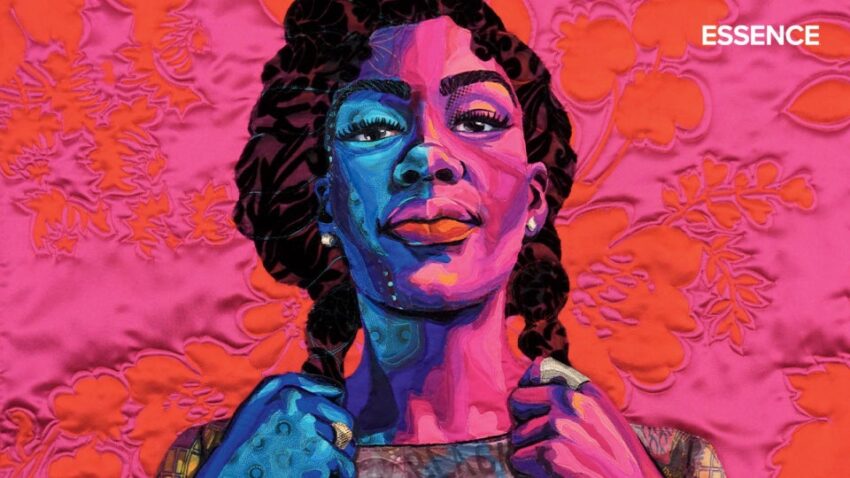
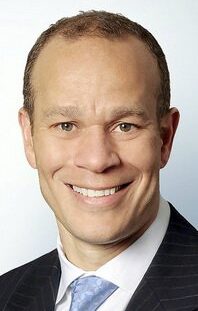 Vice Chair Timothy A. Wilkins (pictured), a lawyer with “over two decades of experience guiding social justice, cultural, and sustainability initiatives across New York City and around the world,” has been elected Board Chair at New York Public Radio. The outlet has been grappling with racial issues, but Goli Sheikholeslami, president and CEO, declared in January, “We’re proud to be a part of the effort to create an anti-racist public radio system that best serves our audiences, now and in the future.”
Vice Chair Timothy A. Wilkins (pictured), a lawyer with “over two decades of experience guiding social justice, cultural, and sustainability initiatives across New York City and around the world,” has been elected Board Chair at New York Public Radio. The outlet has been grappling with racial issues, but Goli Sheikholeslami, president and CEO, declared in January, “We’re proud to be a part of the effort to create an anti-racist public radio system that best serves our audiences, now and in the future.”
- “Robert Lopez returns to the Los Angeles Times after a six-year break from the newsroom. He rejoins the paper as accountability reporter on Metro desk,” Veronica Villafañe reported Monday in her Media Moves site. “In this new role, he’ll take on his own investigative projects as well as work in teams and provide training and support to others. ‘I’m excited about returning to The Times,’ Lopez tells Media Moves. ‘I will be able to help mentor younger reporters and do the investigative journalism that I’ve always loved. I’m also looking forward to being part of the guild’s Latino Caucus.’ ”
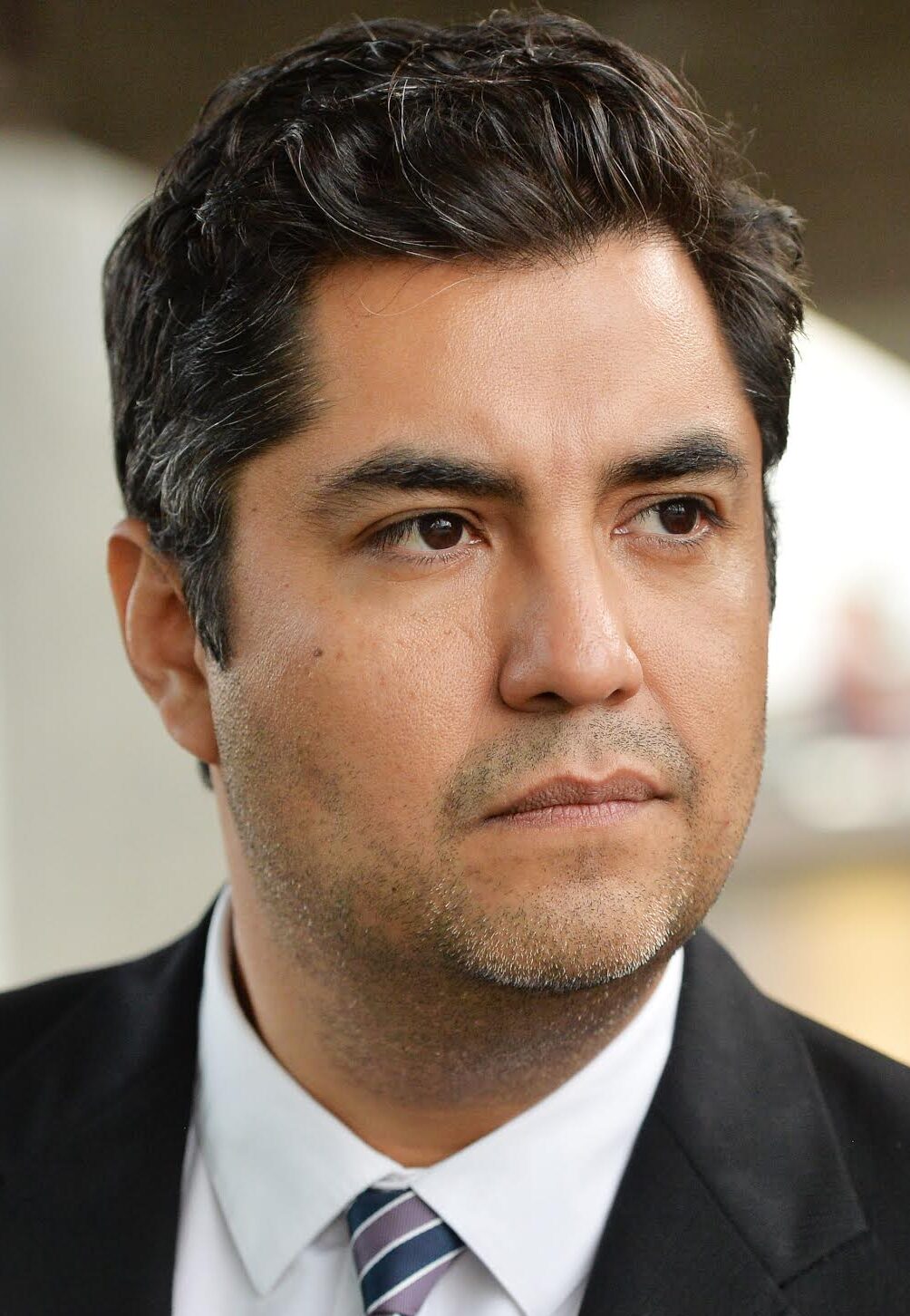 Marcos Nájera (pictured), a multimedia journalist, has joined Oregon Public Broadcasting as the inaugural executive editor of OPB’s newly formed Arts & Culture reporting unit,” the media outlet announced. “He is also a professional artist himself – working in theatre, film and virtual reality. Prior to joining OPB, Nájera was a producer for KPCC’s (NPR/Los Angeles) daily arts & culture show ‘The Frame’ and was a contributing correspondent for ‘Airtalk’ and ‘LAist.’ He has also reported for a variety of public news programs including ‘NPR’s Latino USA,’ ‘All Things Considered’ and PRI’s ‘The World.’ . . .”
Marcos Nájera (pictured), a multimedia journalist, has joined Oregon Public Broadcasting as the inaugural executive editor of OPB’s newly formed Arts & Culture reporting unit,” the media outlet announced. “He is also a professional artist himself – working in theatre, film and virtual reality. Prior to joining OPB, Nájera was a producer for KPCC’s (NPR/Los Angeles) daily arts & culture show ‘The Frame’ and was a contributing correspondent for ‘Airtalk’ and ‘LAist.’ He has also reported for a variety of public news programs including ‘NPR’s Latino USA,’ ‘All Things Considered’ and PRI’s ‘The World.’ . . .”

- “Eighty-six college students will work this summer in paid internships at news organizations around the country through the Dow Jones News Fund,” the fund announced Thursday. “The annual program, which provides pre-internship training in business and data reporting, digital media and editing, will place emerging journalists in more than 50 newsrooms, from community-based nonprofits to the nation’s top media companies. . . .This year’s internship class is the most diverse and inclusive in the Fund’s 60 years, with 62% students of color, 75% women, 5% nonbinary/gender-nonconforming and several international and first-generation college students. . . .”
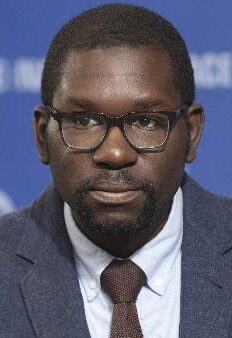 Jamelle Bouie (pictured), op-ed columnist for The New York Times, has won the 2021 Hillman Prize for Opinion & Analysis Journalism, the Sidney Hillman Foundation announced. The foundation quoted the hosts of the podcast “Know Your Enemy” when Bouie was their guest: “Today’s political conflicts reflect, to an extraordinary degree, disagreements over the meaning of American history. Jamelle Bouie’s New York Times column is one of the places where these lively debates are most effectively narrated and clarified.”
Jamelle Bouie (pictured), op-ed columnist for The New York Times, has won the 2021 Hillman Prize for Opinion & Analysis Journalism, the Sidney Hillman Foundation announced. The foundation quoted the hosts of the podcast “Know Your Enemy” when Bouie was their guest: “Today’s political conflicts reflect, to an extraordinary degree, disagreements over the meaning of American history. Jamelle Bouie’s New York Times column is one of the places where these lively debates are most effectively narrated and clarified.”
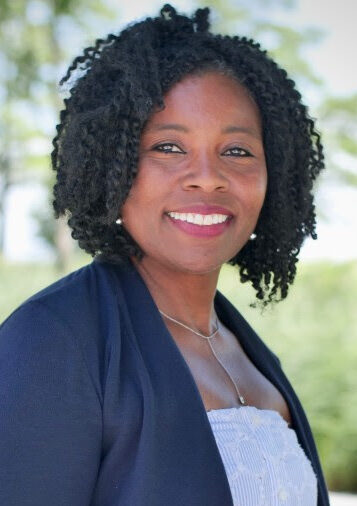 “Steve Edwards, a Chicago Public Media mainstay who helped transform WBEZ into a ratings success story and go-to source for local journalism in the city, is leaving the station to become a partner at an executive-search firm,” Dave McKinney reported Friday for WBEZ. “WBEZ Managing Editor Tracy Brown (pictured) will take over his role as chief content officer, making her one of the most influential newsroom executives and journalists of color in Chicago media. Edwards, whose final day on the job at the station is May 14, praised Brown, who arrived at the station in 2019 following a distinguished career in print journalism, including as an editor at the Atlanta Journal-Constitution. . . .”
“Steve Edwards, a Chicago Public Media mainstay who helped transform WBEZ into a ratings success story and go-to source for local journalism in the city, is leaving the station to become a partner at an executive-search firm,” Dave McKinney reported Friday for WBEZ. “WBEZ Managing Editor Tracy Brown (pictured) will take over his role as chief content officer, making her one of the most influential newsroom executives and journalists of color in Chicago media. Edwards, whose final day on the job at the station is May 14, praised Brown, who arrived at the station in 2019 following a distinguished career in print journalism, including as an editor at the Atlanta Journal-Constitution. . . .”
- “Launched in 2020 as a website and newsletter, Black by God, the West Virginian is a young publication with a small audience,” Lauren Harris reported Thursday for Columbia Journalism Review. “It’s in beta,” Crystal Good said. “But Good believes deeply in the role publications like hers can play in the future of local journalism,” Harris continued, conducting a q-and-a with Good, who is building a publication “that allows for Black voices to have their own microphones, not the microphone passed to them and then taken back.”

 “NBC News’ Kristen Welker (pictured), shortly before she expects the birth of a daughter through a surrogate, is revealing the struggles with infertility that she and her husband, John Hughes, have gone through,” the Associated Press reported Friday. On the “Today” show, Welker, NBC’s chief White House correspondent and the moderator of last fall’s final presidential debate between Joe Biden and Donald Trump, shared a copy of a letter she’s written to her unborn daughter, saying ‘I cannot wait until the moment I hold you for the very first time — it is all I have dreamed about for years.’ The letter described lengthy fertility treatments and the day a doctor told them they would need a surrogate. . . .”
“NBC News’ Kristen Welker (pictured), shortly before she expects the birth of a daughter through a surrogate, is revealing the struggles with infertility that she and her husband, John Hughes, have gone through,” the Associated Press reported Friday. On the “Today” show, Welker, NBC’s chief White House correspondent and the moderator of last fall’s final presidential debate between Joe Biden and Donald Trump, shared a copy of a letter she’s written to her unborn daughter, saying ‘I cannot wait until the moment I hold you for the very first time — it is all I have dreamed about for years.’ The letter described lengthy fertility treatments and the day a doctor told them they would need a surrogate. . . .”
- Adrienne Samuels Gibbs has been named director, multicultural content for Medium. A veteran of Ebony, the Chicago Sun-Times and the Boston Globe, among other outlets, she had been deputy editor of Zora magazine, a publication of Medium.
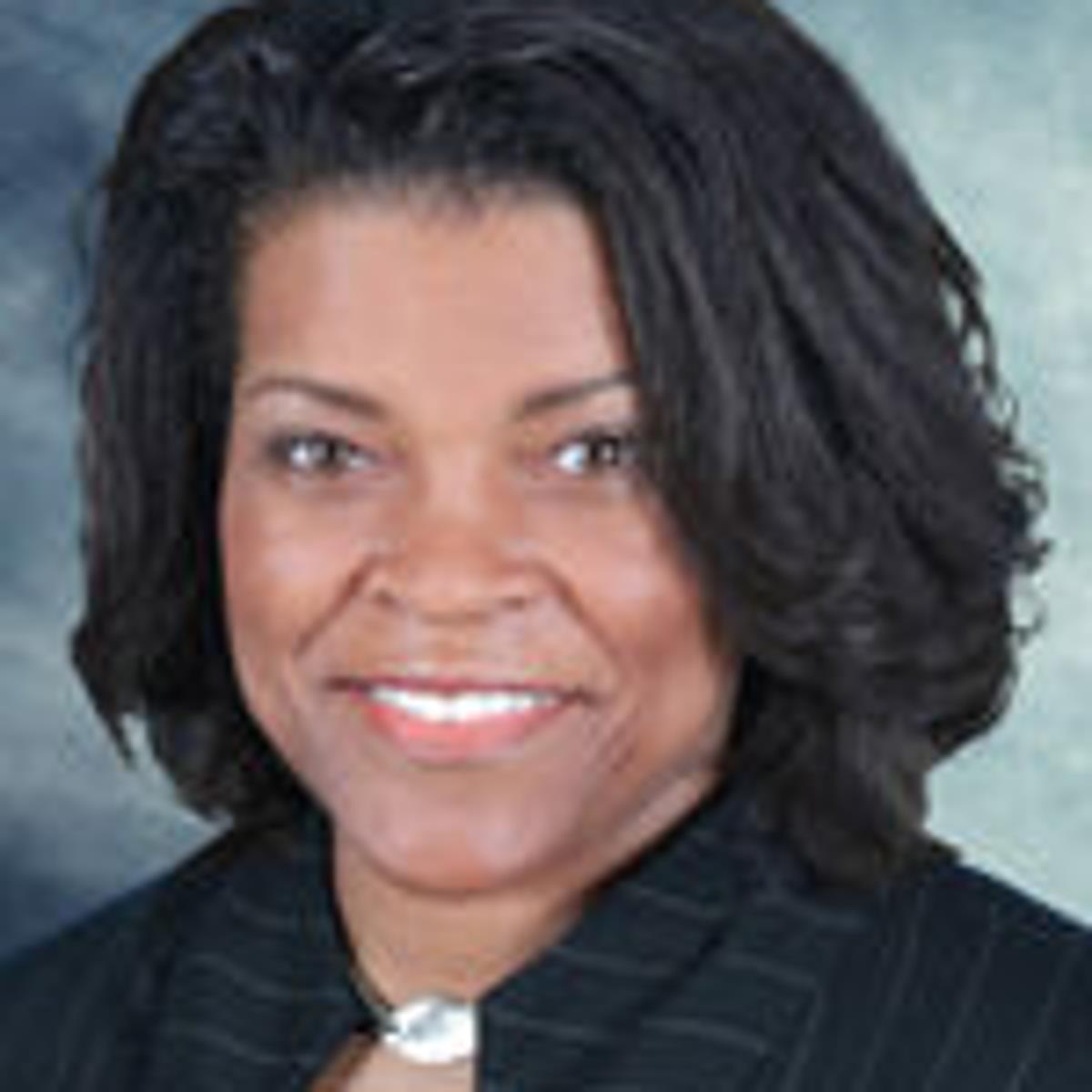 In St. Louis, “A two-month search, which began at KMOX Radio when Rush Limbaugh died, has ended — right inside the station’s studios,” Joe Holleman reported Friday for the St. Louis Post-Dispatch. “Starting May 3, Limbaugh’s time slot will be filled by KMOX (1120 AM) staffers Carol Daniel (pictured), Ryan Wrecker and Bo Matthews.“
In St. Louis, “A two-month search, which began at KMOX Radio when Rush Limbaugh died, has ended — right inside the station’s studios,” Joe Holleman reported Friday for the St. Louis Post-Dispatch. “Starting May 3, Limbaugh’s time slot will be filled by KMOX (1120 AM) staffers Carol Daniel (pictured), Ryan Wrecker and Bo Matthews.“
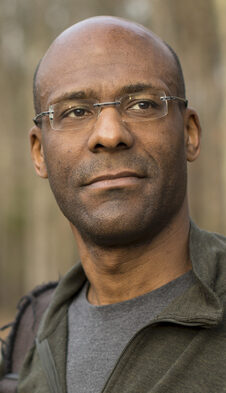 Journalists at The Collegian at the University of Richmond have unveiled a yearlong project to investigate the presence of a burial ground of enslaved people on the college’s campus, Angela Fu reported Friday for the Poynter Institute. The Collegian is one of 10 student media organizations working as part of Poynter’s College Media Project, an initiative that provides support to college media teams to explore a problem on campus. . . .” Also in the Virginia capital, photographer Brian Palmer (pictured), formerly a Beijing bureau chief for U.S. News & World Report and an on-air correspondent for CNN, as well as a scholar in residence at Virginia Commonwealth University, has worked to restore an abandoned African American cemetery near Richmond known as “East End” and to unearth its stories.
Journalists at The Collegian at the University of Richmond have unveiled a yearlong project to investigate the presence of a burial ground of enslaved people on the college’s campus, Angela Fu reported Friday for the Poynter Institute. The Collegian is one of 10 student media organizations working as part of Poynter’s College Media Project, an initiative that provides support to college media teams to explore a problem on campus. . . .” Also in the Virginia capital, photographer Brian Palmer (pictured), formerly a Beijing bureau chief for U.S. News & World Report and an on-air correspondent for CNN, as well as a scholar in residence at Virginia Commonwealth University, has worked to restore an abandoned African American cemetery near Richmond known as “East End” and to unearth its stories.
 CNN International is launching “One World,” a new global news program hosted by Zain Asher (pictured) that is intended to “capture the conversation beyond the headlines in the U.S., Asia and Europe and showcase stories from across Africa.” Starting April 26, it is to air in New York weekdays at noon Eastern time; 5 p.m. in London and 6 p.m. in Johannesburg, South Africa. ” ‘“I’m Nigerian by blood, British by birth and American by residence, which gives me a unique perspective on the connective tissue that transcends cultures and continents,’ said Asher, who was part of the CNN team that won a Peabody Award for its coverage of the 2014 kidnapping of more than 200 schoolgirls in Chibok, Nigeria. . . .”
CNN International is launching “One World,” a new global news program hosted by Zain Asher (pictured) that is intended to “capture the conversation beyond the headlines in the U.S., Asia and Europe and showcase stories from across Africa.” Starting April 26, it is to air in New York weekdays at noon Eastern time; 5 p.m. in London and 6 p.m. in Johannesburg, South Africa. ” ‘“I’m Nigerian by blood, British by birth and American by residence, which gives me a unique perspective on the connective tissue that transcends cultures and continents,’ said Asher, who was part of the CNN team that won a Peabody Award for its coverage of the 2014 kidnapping of more than 200 schoolgirls in Chibok, Nigeria. . . .”
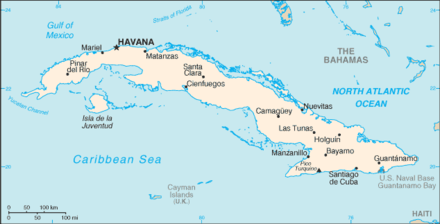 “Ninety miles from U.S. shores, another powerful reckoning has been playing out in one of Cuba’s poorest and predominantly Black neighborhoods,” Miami Herald columnist Fabiola Santiago wrote April 16, updated April 19. “Although this movement, too, calls for social and racial justice and inclusion, the unprecedented uprising of people of color on the Caribbean island hasn’t gotten the attention it deserves from Americans — and in particular, from Black Lives Matter activists and supporters. . . . The Afro-Cubans of Havana’s San Isidro neighborhood — putting their lives on the line to openly confront the Cuban government — could use widespread support right now. They’re the flashpoint of an unrelenting and brave pushback against government repression, suffering, and economic strife that often runs along racial lines. . . .”
“Ninety miles from U.S. shores, another powerful reckoning has been playing out in one of Cuba’s poorest and predominantly Black neighborhoods,” Miami Herald columnist Fabiola Santiago wrote April 16, updated April 19. “Although this movement, too, calls for social and racial justice and inclusion, the unprecedented uprising of people of color on the Caribbean island hasn’t gotten the attention it deserves from Americans — and in particular, from Black Lives Matter activists and supporters. . . . The Afro-Cubans of Havana’s San Isidro neighborhood — putting their lives on the line to openly confront the Cuban government — could use widespread support right now. They’re the flashpoint of an unrelenting and brave pushback against government repression, suffering, and economic strife that often runs along racial lines. . . .”
- “This month, Nicaragua completes three years of crisis that began on April 18, 2018, when the country was shaken by serious protests,” Marina Estarque reported April 14 for LatAm Journalism Review. The demonstrations, initially against a pension reform, expanded and turned against the authoritarian regime of Daniel Ortega, who has held the presidency since 2007. . . . On the anniversary of the demonstrations, LatAm Journalism Review (LJR) spoke with reporters in Nicaragua to find out what it is like to live and work in a climate of fear and repression, in which journalists are arrested, prosecuted and harassed by the police in their homes. At the same time, critical media suffer from government newsprint retention, are shut down or are expropriated. . . .”
- “The Venezuelan newspaper El Nacional asked the Supreme Court of Justice (TSJ) to clarify a ruling of one of its chambers that condemned it to pay a millionaire sum for moral damages to the vice president of the United Socialist Party of Venezuela (PSUV), Diosdado Cabello, said the newspaper’s lawyer,” Vivian Sequera reported April 17 for Reuters.
- “The Brazilian Press Association (ABI, for its acronym in Portuguese) and the Brazilian Association of Investigative Journalism (Abraji) decided to take action against what they classify as the judicial harassment of journalists,” Júlio Lubianco reported April 14 for LatAm Journalism Review. “The ABI filed two lawsuits with the Federal Supreme Court to curb the abuse of lawsuits against journalists and media companies. . . . According to a survey by Abraji, since 2002, journalists and journalism companies have been the target of more than 5,000 lawsuits for slander and defamation, charged with paying large damages and removing content. Most of the claimants are politicians. . . .”
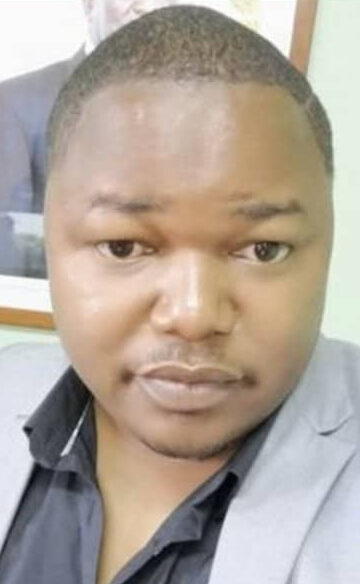 In Zimbabwe, “Former Herald Editor, Tichaona Zindoga (pictured) has opened up on his tough experience when he was at the helm of the state controlled daily where he claims First Lady Auxillia Mnangagwa constantly interfered with his job,” Leopold Munhende reported Tuesday for New Zimbabwe. “He described the experience as ‘uncomfortable, traumatic and bad’. . .”
In Zimbabwe, “Former Herald Editor, Tichaona Zindoga (pictured) has opened up on his tough experience when he was at the helm of the state controlled daily where he claims First Lady Auxillia Mnangagwa constantly interfered with his job,” Leopold Munhende reported Tuesday for New Zimbabwe. “He described the experience as ‘uncomfortable, traumatic and bad’. . .”
- “Relations between the Ugandan People’s Defense Forces and the media have been strained in recent months, after several journalists were beaten by army troops while trying to cover a demonstration,” Halima Athumani reported April 19 for the Voice of America. “In hopes of improving matters, top army officers played two friendly football (soccer) matches with members of the media. This was no ordinary match. Guns and boots filled the Phillip Omondi football grounds. Most of the spectators were dressed in army fatigues. . . .”
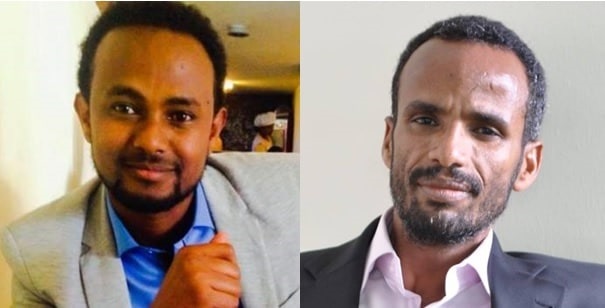 In Ethiopia, journalists “Fitsum Berhane (pictured, left) and Tamirat Yemane (pictured, right) were arrested in Mekelle by members of the Federal Defense Forces, the army said,” Medihane Ekuabamichael reported April 17 for the Addis Standard. “In a statement released on the [Ethiopian National Defence Force] Facebook page on April 16, the army said that Fitsum Berhane is a journalist working for ‘Tigray Media House’ and identified Tamirat Yemane as ‘Editor-in-Chief of Aiga Forum and representative in Ethiopia.’ The statement claimed they were arrested while live broadcasting what it described as ‘false propaganda’ from their studio in a private house in Mekelle, the capital city of Tigray regional state.”
In Ethiopia, journalists “Fitsum Berhane (pictured, left) and Tamirat Yemane (pictured, right) were arrested in Mekelle by members of the Federal Defense Forces, the army said,” Medihane Ekuabamichael reported April 17 for the Addis Standard. “In a statement released on the [Ethiopian National Defence Force] Facebook page on April 16, the army said that Fitsum Berhane is a journalist working for ‘Tigray Media House’ and identified Tamirat Yemane as ‘Editor-in-Chief of Aiga Forum and representative in Ethiopia.’ The statement claimed they were arrested while live broadcasting what it described as ‘false propaganda’ from their studio in a private house in Mekelle, the capital city of Tigray regional state.”
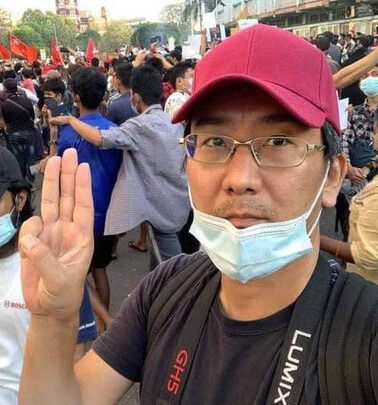 “The Myanmar military detained Japanese freelance journalist, Yuki Kitazumi (pictured) in Yangon on April 18 for allegedly disseminating ‘fake news’,” the International Federation of Journalists said Wednesday. The press freedom group said it condemned “the continued threat to journalists across Myanmar and calls for the immediate release of all detained journalists.”
“The Myanmar military detained Japanese freelance journalist, Yuki Kitazumi (pictured) in Yangon on April 18 for allegedly disseminating ‘fake news’,” the International Federation of Journalists said Wednesday. The press freedom group said it condemned “the continued threat to journalists across Myanmar and calls for the immediate release of all detained journalists.”
To subscribe at no cost, please send an email to journal-isms+subscribe@groups.io and say who you are.
Facebook users: “Like” “Richard Prince’s Journal-isms” on Facebook.
Follow Richard Prince on Twitter @princeeditor
Richard Prince’s Journal-isms originates from Washington. It began in print before most of us knew what the internet was, and it would like to be referred to as a “column.” Any views expressed in the column are those of the person or organization quoted and not those of any other entity. Send tips, comments and concerns to Richard Prince at journal-isms+owner@
View previous columns (after Feb. 13, 2016).
View previous columns (before Feb. 13, 2016)
- Diversity’s Greatest Hits, 2018 (Jan. 4, 2019)
- Book Notes: Is Taking a Knee Really All That? (Dec. 20, 2018)
- Book Notes: Challenging ’45’ and Proudly Telling the Story (Dec. 18, 2018)
- Book Notes: Get Down With the Legends! (Dec. 11, 2018)
- Journalist Richard Prince w/Joe Madison (Sirius XM, April 18, 2018) (podcast)
- Richard Prince (journalist) (Wikipedia entry)
- February 2018 Podcast: Richard “Dick” Prince on the need for newsroom diversity (Gabriel Greschler, Student Press Law Center, Feb. 26, 2018)
- Diversity’s Greatest Hits, 2017 — Where Will They Take Us in the Year Ahead?
- Book Notes: Best Sellers, Uncovered Treasures, Overlooked History (Dec. 19, 2017)
- An advocate for diversity in the media is still pressing for representation, (Courtland Milloy, Washington Post, Nov. 28, 2017)
- Morgan Global Journalism Review: Journal-isms Journeys On (Aug. 31, 2017)
- Diversity’s Greatest Hits, 2016
- Book Notes: 16 Writers Dish About ‘Chelle,’ the First Lady
- Book Notes: From Coretta to Barack, and in Search of the Godfather
- Journal-isms’ Richard Prince Wants Your Ideas (FishbowlDC, Feb. 26, 2016)
- “JOURNAL-ISMS” IS LATEST TO BEAR BRUNT OF INDUSTRY’S ECONOMIC WOES (Feb. 19, 2016)
- Richard Prince with Charlayne Hunter-Gault,“PBS NewsHour,” “What stagnant diversity means for America’s newsrooms” (Dec. 15, 2015)
- Book Notes: Journalists Follow Their Passions
- Book Notes: Journalists Who Rocked Their World
- Book Notes: Hands Up! Read This!
- Book Notes: New Cosby Bio Looks Like a Best-Seller
- Journo-diversity advocate turns attention to Ezra Klein project (Erik Wemple, Washington Post, March 5, 2014)

